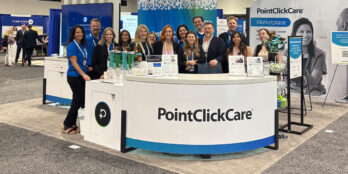
PDPM Roundup: Recapping the Journey to the Patient-Driven Payment Model
 7 min
7 min
Change is never easy, and Skilled Nursing Facilities face a big change next week. On October 1, CMS will change the way they reimburse SNF provide for the care they provide to Medicare recipients. This will help transform the healthcare system by reimbursing providers based on the quality of care they provide patients instead of the quantity of services provided.
As we look ahead to this major change, here is a recap of the journey to PDPM:
Stage 1: Conceptualize
The first stage in the journey is all about planning. The changes made along the way were built on your gap analysis – from the review of all the changes you made using the RUGs approach, reimbursement, to the end state of mastering PDPM. Change management is the key to success and it’s critical to focus on:
- Optimizing
reimbursement - Addressing
your facility’s changing resident populations - Preparing
for the impact of the change
Each facility has its own processes and objectives to achieve, but there are 5 areas you should have considered while developing your plan:
- Understanding the Impact PDPM will have on
business and operations - Auditing ICD-10 codes for accurate and
comprehensive diagnosis coding to ensure adequate resourcing - Audit Records and Referrals
- Determine staff learning needs to be PDPM
competent
To read more about Stage 1: Conceptualize, check out our full blog post here.
Stage 2: Standardize
The second stage in the PDPM journey involves standardizing administrative and operational workflows, content, and care approaches. This helps to ensure a consistent level of care and predictable outcomes in this new reimbursement and value-based care world.
This stage requires you to focus on:
- Standardizing
data collection processes - Standardizing
evidence-based protocols and best practice workflows to support care delivery - Reviewing
your technical capabilities - Training staff on new processes
The foundation needed for PDPM starts with solidifying standardized processes that drive change and quality improvement. To learn more about Stage 2: Standardize, check out our full blog post.
Stage 3: Analyze
Now that your processes and care content have been standardized and your staff have adjusted to the new tools, workflows, content, and approaches, it’s time to begin Stage 3: Analyze. This stage allows you to examine the changes you have made and determine what is working and what needs more attention.
In stage 3, you should be looking for any potential gaps in your processes and discover the impact standardization from stage 2 has had on your outcomes.
To continue throughout this stage, follow these guidelines:
- Review your New Protocols and Workflows –
Look for areas of improvement, outcomes that didn’t change, and get feedback on
the changes from staff. - Re-examine Your MDS Accuracy –
Ensure gaps have been closed between the five-day and 14-day RUGs assessments - Evaluate Your Revenue and Quality Mix –
PDPM only affects a portion of your revenue this year. You need a clear
understanding of how this change impacts the bigger picture to ensure you are
making the best decisions to achieve financial success in the future. - Validate Your Revenue Projections –
Understanding the impact this will have in 2020 will help you be successful in
fiscal 2021. Take into account all payers and shifts in the industry towards
advantage plans.
To learn more about Stage 3: Analyze, check out our blog post.
Stage 4: Optimize
Now that you have developed a plan, standardized processes, and analyzed data, you now need to optimize your plan with insights you’ve gained from the journey so far. This means taking all the gathered data and using it to close the gaps and make the necessary improvements before implementation.
This stage is particularly important as it is the final alignment between all disciplines and services at the home. Here are a few strategies to keep in mind during the fourth stage:
- Review Your Change Management Plan – Re-examine
and reinforce the plan you developed in stage 1 using the data and insights
collected in other stages. - Implement Quality Assurance and Performance
Improvement Programs to Close Identified Gaps – Using a QAPI solves
two problems at once, making it easier to build efficiencies into your plan. - Examine Additional Revenue Options – Always
look for specialized services provisions to close the gap between occupancy and
revenue. - Determine Your Resource Needs – Evaluate
the resources you’ll need to successfully transition to PDPM.
Check out our full blog post to learn more about Stage 4: Optimize.
Stage 5: Operationalize
The fifth and final stage to achieving success on your PDPM journey is Operationalize. This stage is about maintaining the changes you have made throughout the first 4 stages of this journey, in order to remain compliant with PDPM in the future.
Here are some guidelines for completing Stage 5:
- Transition Successfully to PDPM – The most important part of this journey is transitioning payment assessments from RUGs to PDPM. Homes will need to remember that lookbacks for assessments start before October 1 since the ARDs need to be between October 1st and 7th. All Med A residents in the home on September 30th and October 1st, 2019 will need an assessment.
- Monitor and Audit MDS With the New PDPM Rules – Once PDPM is in full effect, make sure coding processes and any tools are supporting PDPM as intended. Make sure your MDS coordinators are comfortable with any new or changed processes.
- Monitor Care Delivery – Your team must continue to follow standardized processes and use tools appropriately in order to improve the resident experience. Standardization improves quality of care which in turn improves the quality of life for your residents.
- Ensure You Can Survive an Audit Without Claw Backs – The key to not losing money will be in your concise and easy-to-find supportive documentation within the resident’s records. Make sure monitoring of processes also includes the documentation required to support care and services delivered.
More details about Stage 5: Operationalize can be found here.
Want to review the 5 stages of the PDPM journey? Check out our webinars for each of the stages:
September 24, 2019






